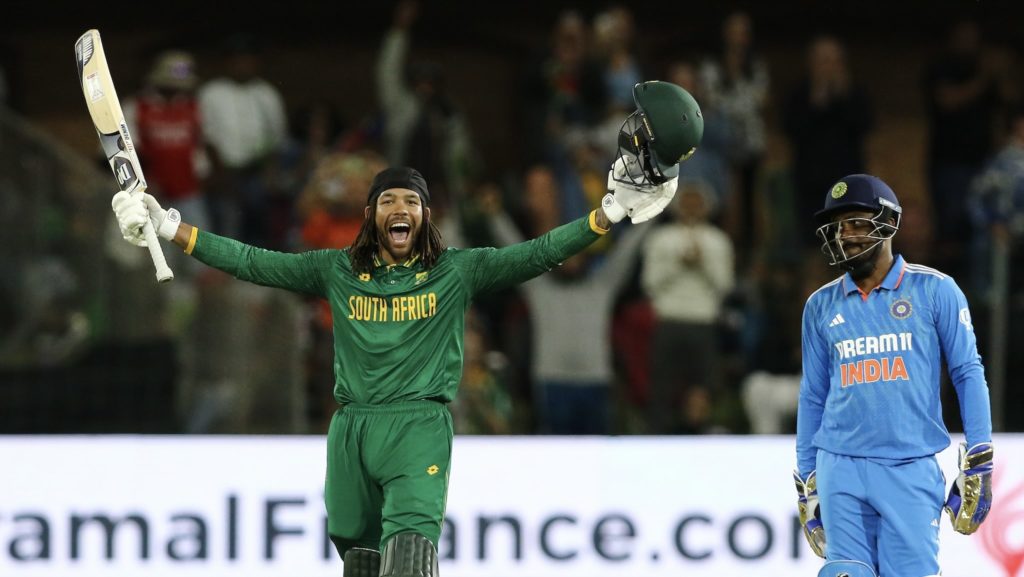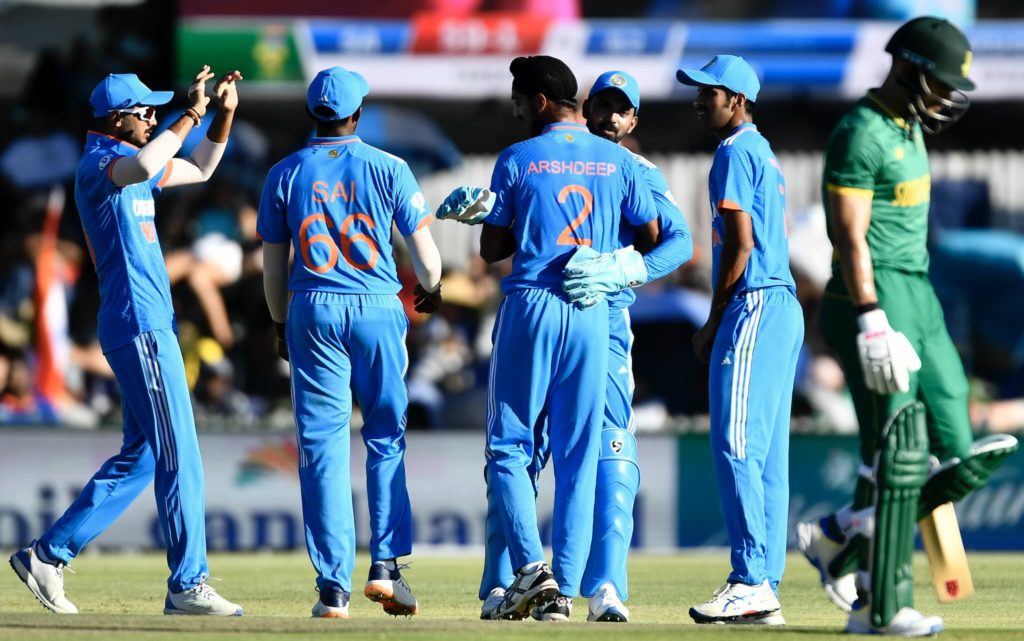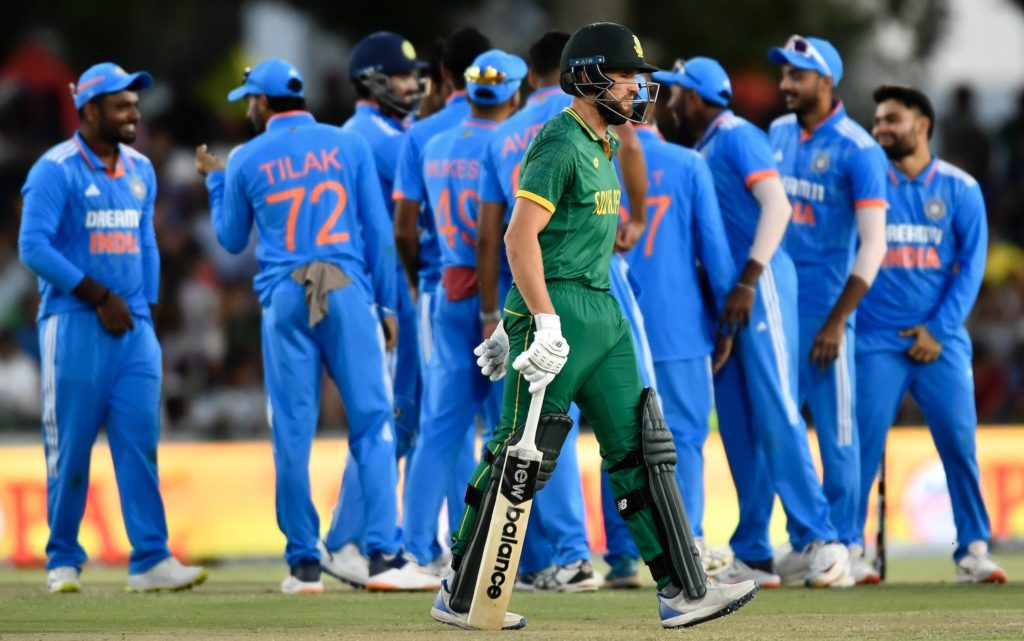The ODI series against a third-string India side yielded few positives for the Proteas. RYAN VREDE analyses the five key takeaways.
After being blitzed in the T20I series, the Proteas would have had strong belief going into a series against weakened opposition, in arguably their strongest format.
Granted the Proteas fielded a weakened side themselves, but they still boasted the core of the batting line-up that fronted their World Cup challenge two months ago. Yet those batters failed to make any significant impression on the series, while a collection of inexperienced bowlers struggled to adapt to the demands of international cricket.
There were some positives, but the overwhelming sense in the wake of the 2-1 series defeat at home is that CSA director of cricket Enoch Nkwe, Proteas head coach Rob Walter and his coaching staff have a lot of work to do.
De Zorzi a lone batting bright spot
In the first series post-Quinton de Kock’s ODI retirement, De Zorzi has emerged as a competent replacement. The left-hander looks organised, technically sound, and possesses the cricket IQ and temperament needed at the top of the order in international cricket.

It remains to be seen whether world-class bowlers will expose his early propensity to fall over to the offside (a technical glitch that can be relatively easily fixed), but De Zorzi looks to be a strong candidate to fill the void De Kock’s retirement leaves.
HIGHLIGHTS: Proteas vs India (2nd ODI)
Burger rocks and deserves investment
Nandre Burger’s presence and influence are undeniable. His talent and skills were exhibited throughout the series, most notably in the second match, where he bowled quickly with great control and appreciable intelligence given his inexperience at the level.
Being a lefty, he added an attacking dimension to the Proteas’ attack, and while he is unlikely to start when all the premier quicks are available, Burger certainly adds a depth of quality to the stocks.

He is raw and in need of the type of refinement that comes with elite coaching and experience at the top level. But the selectors must invest in him. He is a gem with a high potential ceiling.
The Mulder experiment has run its course
I’ve dedicated countless column inches in praise of Wiaan Mulder. I truly believed he was going to be a three-format answer to the troublesome all-rounder issue, one that has haunted South Africa since Jacques Kallis’ retirement.
Yet even I have to admit that my faith may have been misplaced. With the bat, he averages just 10 in ODI cricket after 12 innings. As a bowler, I struggle to understand his value. He isn’t a strike bowler, but neither is he a competent middle-overs choker.
He is just 25 years old, leaving time for him to develop into an international cricketer many astute observers believe he can be. But that development isn’t helped by chronic struggles at the game’s elite levels. He needs to refine his game at the domestic level and dominate there, before being recalled to a Proteas squad.
I hope he can do this because I truly believe that somewhere under the scar tissue of his international wounds, lies a truly world-class all-rounder.
Selection and leadership issues abound
CSA director of cricket Enoch Nkwe has empowered Proteas head coach Rob Walter to select the sides he wants without interference. This has yielded mixed results, with notable upsides being ODI series victories over England and Australia, and a consistent side featuring clearly defined roles.
However, there have been questionable calls, including a devotion to skipper Temba Bavuma despite chronic struggles at the World Cup, and, most recently, the omission of Tabraiz Shamsi on a Boland Park deck that appeared to be suited to his skill set.
The Proteas’ spinners, Keshav Maharaj and Aiden Markram, went at 3.70 and 3.80 respectively on Thursday. India’s spinners then made critical breakthroughs in the Proteas’ batting innings, while also strangling the run-rate. It didn’t take hindsight to understand that Shamsi’s omission was a poor selection call, especially considering Boland Park is the wrist spinner’s SA20 home venue.
Similarly, most were perplexed that having won the toss, Markram opted to bowl first on a wicket that has historically become more challenging to bat on second. This would have been a decision made after discussion with Walter and the broader leadership group. Ultimately, it contributed notably to them losing the match and series.
The chase is still problematic
The majority of the Proteas’ success in the calendar year has been with a foundation set by massive totals batting first. However, their inability to navigate high-pressure chases has consistently cost them matches this year.
This was evident once again in their World Cup campaign, where they lost to the Netherlands and India batting second while inching home by a wicket against Pakistan.

On Thursday, with the series on the line, they crumbled yet again, collapsing from 140-2 to 218 all out. Temperament can’t be coached, so it’s hard to see how this deficiency is remedied. Whether Walter and his coaching team can solve this deficiency will define his tenure.
READ: Proteas a bit ‘pap’ – Markram
Main photo: Ashley Vlotman/Gallo Images







